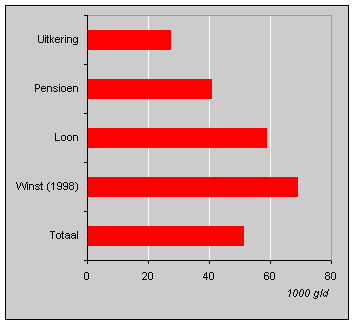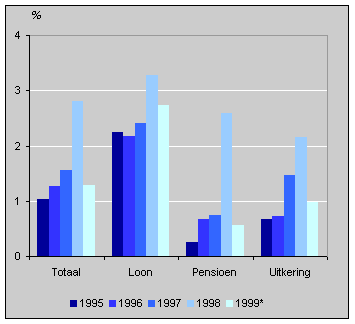Purchasing power increases further

In 1999 the average disposable income of Dutch households was nearly 23,500 euro. In terms of purchasing power this was 1.3% more than in the previous year, equalling the growth rate of purchasing power in the period 1995-1997. In 1998 it rose more strongly (2.8%), mainly because of a new form of tax relief for the over-65’s.
Disposable household income by source of income

The improvement in purchasing power was largest for employee households. On average households who received their main income from wages had 2.5% more to spend in 1999 than in 1998. Some of these households received a social benefit or pension instead of wages in 1999. For households with income from wages in both 1998 and 1999, purchasing power rose more strongly, namely by 2.7%.
Annual change in purchasing power by source of income

In households which had to depend on a benefit in 1998, purchasing power rose by 1.6%. Naturally, it mainly increased for households who were no longer dependent on a social benefit in 1999. Purchasing power rose by less for households receiving a benefit in both years.
The increase in purchasing power for pensioners was on average 0.6%, about the same as in the preceding years, except 1998, when pensioners benefited from a tax deduction.
Hans de Kleijn